Introduction
The transition from on-premises infrastructure to cloud-based solutions represents a pivotal moment for organizations seeking to enhance their operational capabilities and drive innovation. This strategic migration process not only facilitates significant cost savings and improved scalability but also equips businesses to respond adeptly to market demands and unforeseen disruptions.
As companies grapple with the complexities of cloud technology, understanding the various migration strategies and the steps necessary for successful execution becomes essential. This article delves into the intricacies of cloud migration, exploring key methodologies, potential challenges, and best practices for post-migration management, ultimately guiding organizations toward maximizing their cloud investments and achieving sustained success in an increasingly digital landscape.
Understanding On-Premises to Cloud Migration
The process of on premises cloud migration involves the strategic transition of data, applications, and business functions from local servers or data centers to internet-based infrastructure. This migration presents a multitude of advantages, such as significant cost savings, enhanced scalability, improved collaboration, and bolstered security measures. As Cody Slingerland observes, the U.S. and Western Europe, which collectively represent 82% of the global computing market, play a crucial role in this technological transition.
Organizations that adopt online solutions are better prepared to sustain operations, especially in regions prone to emergencies, as they can react quickly to disruptions. Furthermore, the flexibility of online infrastructure enables businesses to adapt to market demands and scale resources efficiently. In light of these compelling benefits and the pressing need for effective cost management—especially given that 75% of organizations report increased waste, with some facing up to 47% of their budget wasted—understanding the foundational elements of on premises cloud migration is imperative.
This knowledge will enable organizations to maximize their investments in digital technology and drive innovation and operational efficiency. A recent survey by StormForge emphasizes this trend, indicating that as expenditure on virtual services rises, so does waste in that area, reinforcing the necessity for improved management approaches.
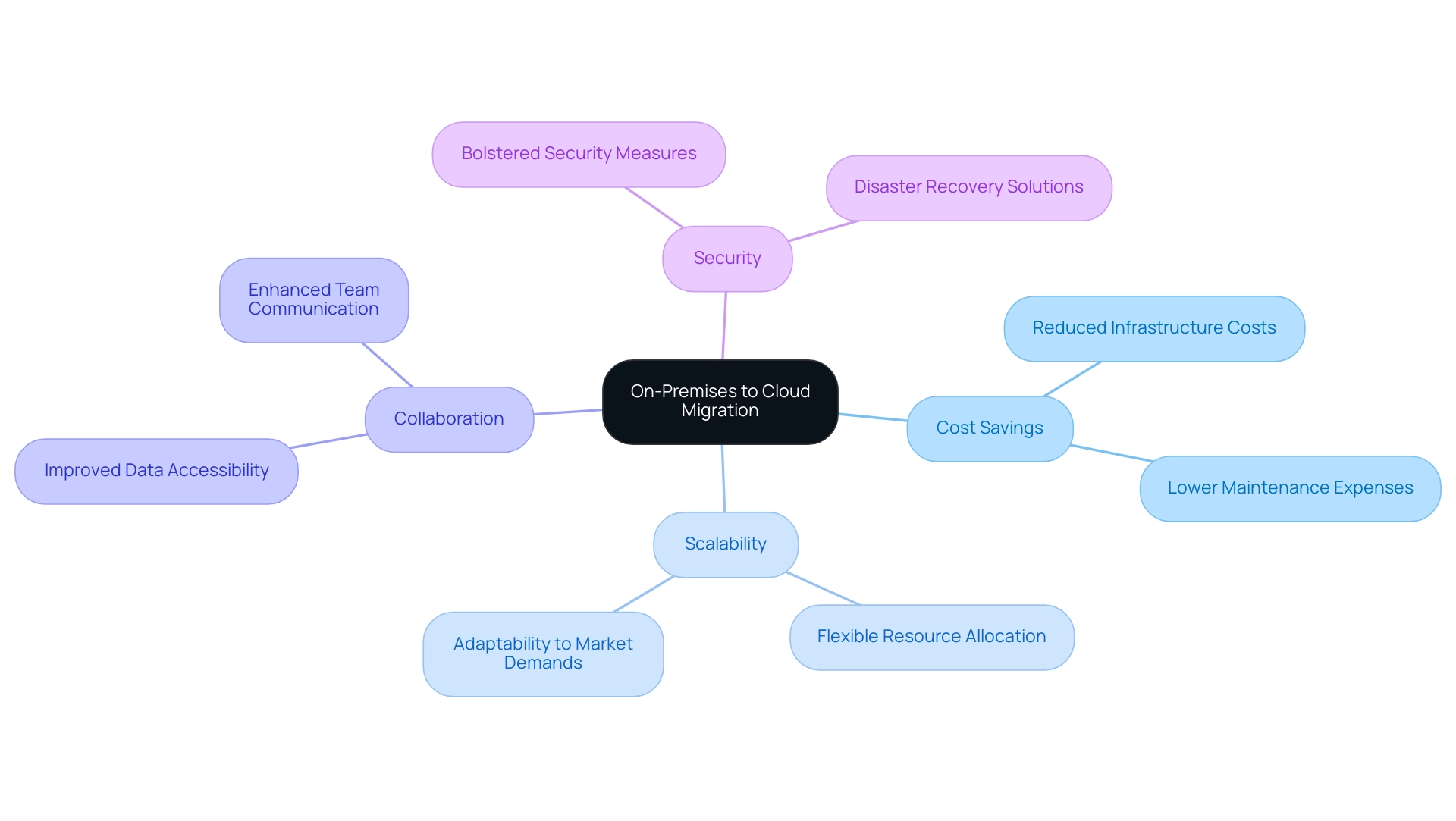
Exploring Migration Strategies: Methods and Processes
Migrating to the cloud requires careful consideration of several key strategies, each tailored to meet specific business needs and technical requirements:
-
Rehosting (Lift and Shift): This method involves transferring applications and data to a remote server without significant alterations. While it provides a swift transition, it may not fully utilize the extensive capabilities of the digital environment.
-
Refactoring: This strategy involves modifying applications to optimize them for online operations while preserving their core functionalities. This adaptation can improve performance and scalability, enabling businesses to take better advantage of online resources.
-
Replatforming: A hybrid approach that modifies certain components to utilize cloud features while keeping others intact. This method strikes a balance between speed and optimization, making it a practical choice for many organizations.
-
Repurchasing: Involves replacing legacy applications with cloud-native solutions, which often results in significant enhancements in functionality and operational efficiency. This shift can facilitate a more agile and responsive business environment.
-
Retiring: Some applications may become outdated during the transition process, allowing organizations to decommission them and streamline their IT operations.
-
Retaining: Certain applications may need to stay on-premises due to compliance requirements or performance considerations, necessitating a strategic decision about their future.
The choice of the suitable approach for on-premises cloud migration depends on various factors, including business objectives, budgetary constraints, and technical specifications. As numerous organizations acknowledge that on-premises cloud migration is a crucial element of contemporary data safeguarding approaches, comprehending these techniques is vital for efficient planning and implementation of transition efforts. Notably, industry insights reveal that as organizations increase their expenditure on digital services, they often encounter parallel challenges with waste, as highlighted by StormForge: "Most companies reported that as their spending rose, so did their waste."
Moreover, with Amazon Web Services (AWS) dominating 31% of the online infrastructure services market, the importance of implementing efficient transition plans is highlighted. Moreover, the remarkable 63.7% increase of Google Cloud's IaaS service demonstrates the competitive environment and potential success that can be attained through well-planned transition strategies.
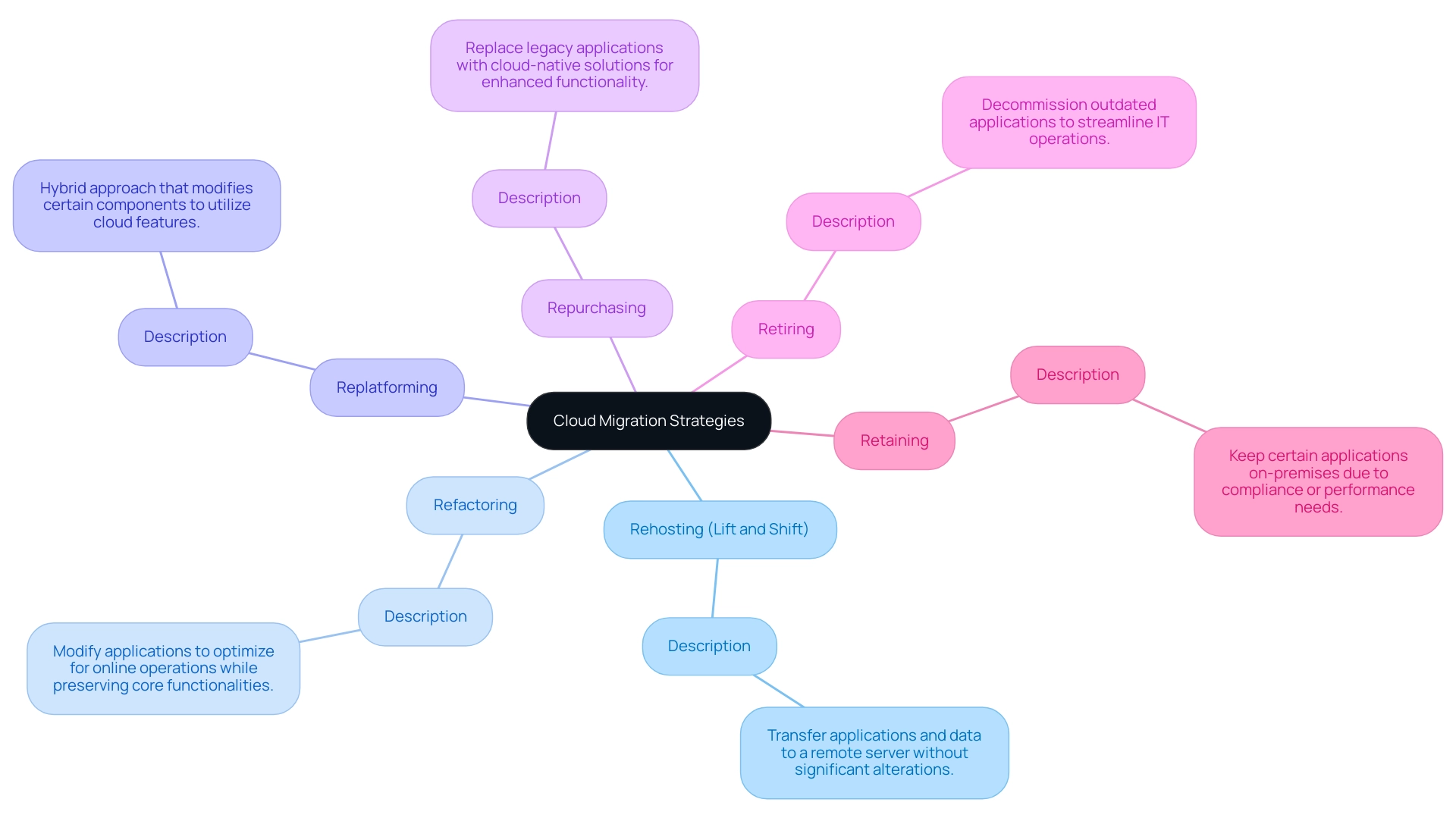
Step-by-Step Guide to Executing Cloud Migration
To effectively carry out an on-site data transfer, organizations should adhere to the following comprehensive steps:
- Assessment: Begin by evaluating your existing infrastructure, applications, and workloads. This crucial step in on-premises cloud migration involves identifying which components should be migrated, recognizing dependencies, and assessing their compatibility with prospective cloud services.
- Planning: Create a comprehensive transition plan that outlines timelines, resource allocation, and risk management strategies. It is vital to involve key stakeholders throughout this process to ensure that the migration aligns with broader business objectives.
- Choosing the Right Service Provider: The selection of a service provider is paramount. Prioritize providers that align with your organization’s specific requirements in terms of performance, security, and compliance. Research indicates that by 2020, approximately 41% of business workloads were hosted in the cloud, highlighting the growing reliance on cloud services and the importance of on-premises cloud migration in transfer efforts.
- Proof of Concept: Conduct a pilot transfer using non-critical applications. This enables your team to evaluate the transition process, pinpoint possible challenges, and enhance approaches prior to a complete transition.
- Transfer Execution: Implement the transfer according to the chosen strategy, ensuring to monitor progress closely. Address any challenges that arise in real-time to mitigate risks effectively.
- Testing: Post-migration, it is essential to rigorously test all applications and services to confirm their functionality within the online environment.
- Training: Equip your staff with the necessary training on new systems and processes, facilitating a smooth transition and ensuring operational continuity.
- Go Live: Following successful testing and training, proceed to go live with the migrated applications and services, ensuring that all stakeholders are informed and prepared for the transition.
- Post-Migration Review: After going live, conduct a thorough review of the transition process. Document achievements and insights gained to guide future migrations and improve organizational knowledge.
This organized method not only simplifies on-premises cloud migration but also enables organizations to take advantage of the benefits of technology, which has been demonstrated to significantly lower operational expenses; for example, Applause integrated CloudZero and achieved a 23% reduction in their spending. As over 60% of corporate information is presently kept in remote storage, this highlights the vital necessity for strong data protection approaches in virtual environments. As noted by Synergy Research Group, major players like CloudFlare and Akamai are essential in the Content Distribution Network (CDN) sector, further emphasizing the significance of choosing the right service provider.
The trend of increasing data storage online raises concerns about security, as highlighted in the case study 'Data Storage Trends,' which emphasizes the need for robust data protection strategies in digital environments.
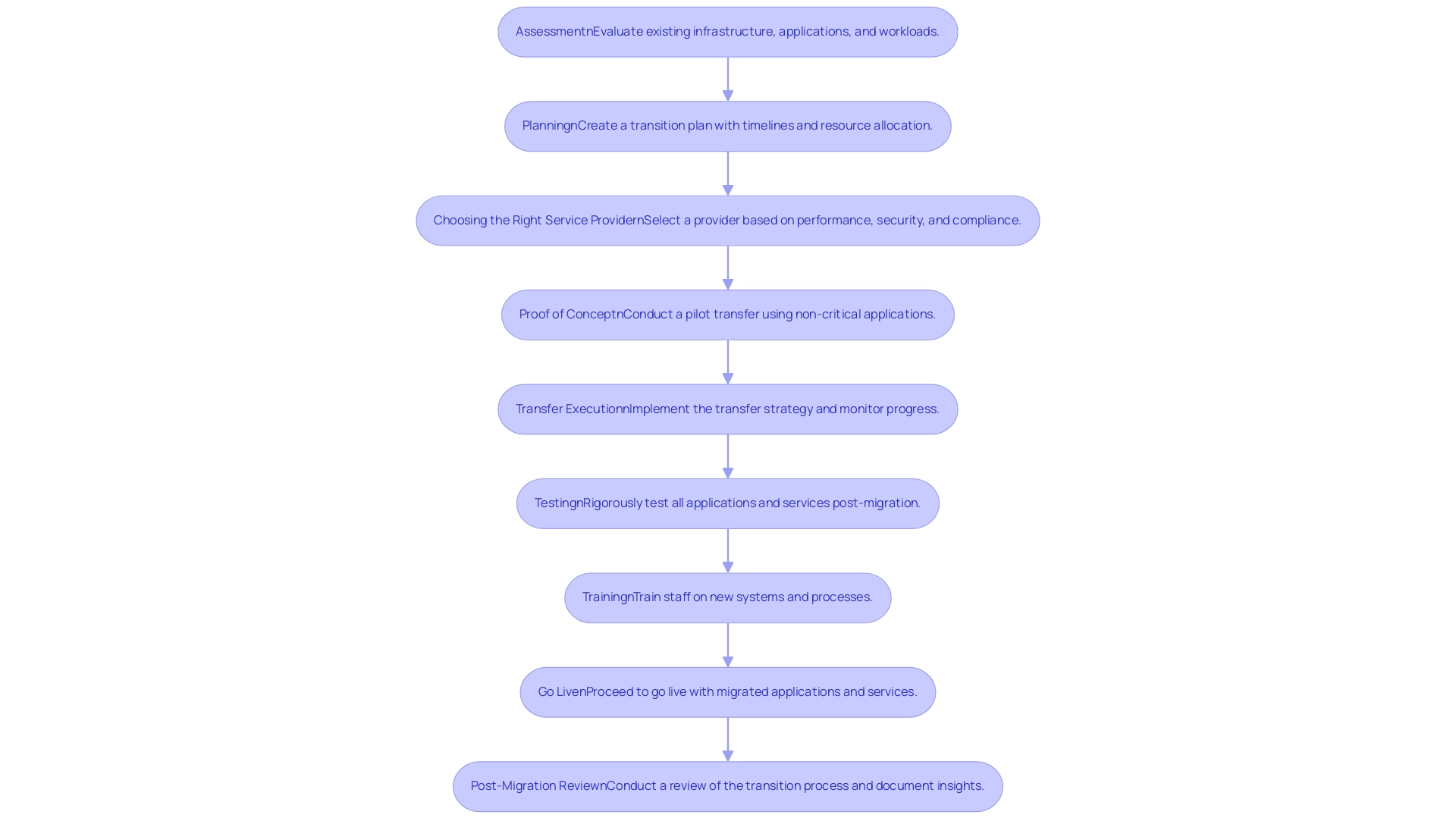
Navigating Challenges in Cloud Migration
Organizations face several common challenges during cloud migration that require careful consideration and strategic planning:
-
Data Security: The safeguarding of sensitive information during transfer is crucial. Implementing encryption and secure transfer protocols is essential to safeguard data integrity. As emphasized by Grace Lau, Director of Growth Content, "IP whitelisting is a protective measure that limits access to a network/system to a designated list of trusted IP addresses." This approach ensures that only individuals using the approved addresses can access certain resources. This particular approach emphasizes the significance of strong protective measures during transfer. Recent statistics show that the worldwide online data protection market is anticipated to grow at a compound annual growth rate (CAGR) of 13.6% from 2023 to 2028, highlighting the increasing focus on digital safety.
-
Downtime: Minimizing downtime is vital for maintaining business continuity. It is advisable to schedule transfers during off-peak hours and to implement robust backup solutions to prevent disruption. Recent surveys suggest that 57% of businesses with small IT security teams are increasingly depending on external services for their security systems, which highlights the necessity for smooth operations during transition. This reliance highlights the potential risks associated with downtime during the migration process.
-
Compliance Issues: Ensuring adherence to industry regulations is paramount. Engaging with legal and compliance teams early in the process can help identify and address potential concerns. With 76% of enterprises utilizing at least two service providers, the complexity of compliance management increases, necessitating proactive measures. The financial consequences of these compliance challenges are clear in the rise in security expenditure for online services, which increased from $595 million in 2020 to over $4 billion in 2021, with forecasts exceeding $6 billion in 2023.
-
Skill Gaps: The absence of proficiency in internet-based technologies can hinder transition efforts. Organizations should invest in training or consider hiring specialists to bridge these knowledge gaps. This investment not only improves success in relocation but also develops internal capabilities for future challenges.
-
Integration Challenges: Achieving seamless incorporation of online applications with existing systems is critical. It is essential to plan for integration during the assessment phase and conduct thorough testing post-migration to ensure that all systems operate harmoniously.
By anticipating these challenges and formulating specific approaches to alleviate them, organizations can significantly improve their chances for a successful migration to the digital environment, ultimately utilizing the advantages of this technology to propel digital transformation.
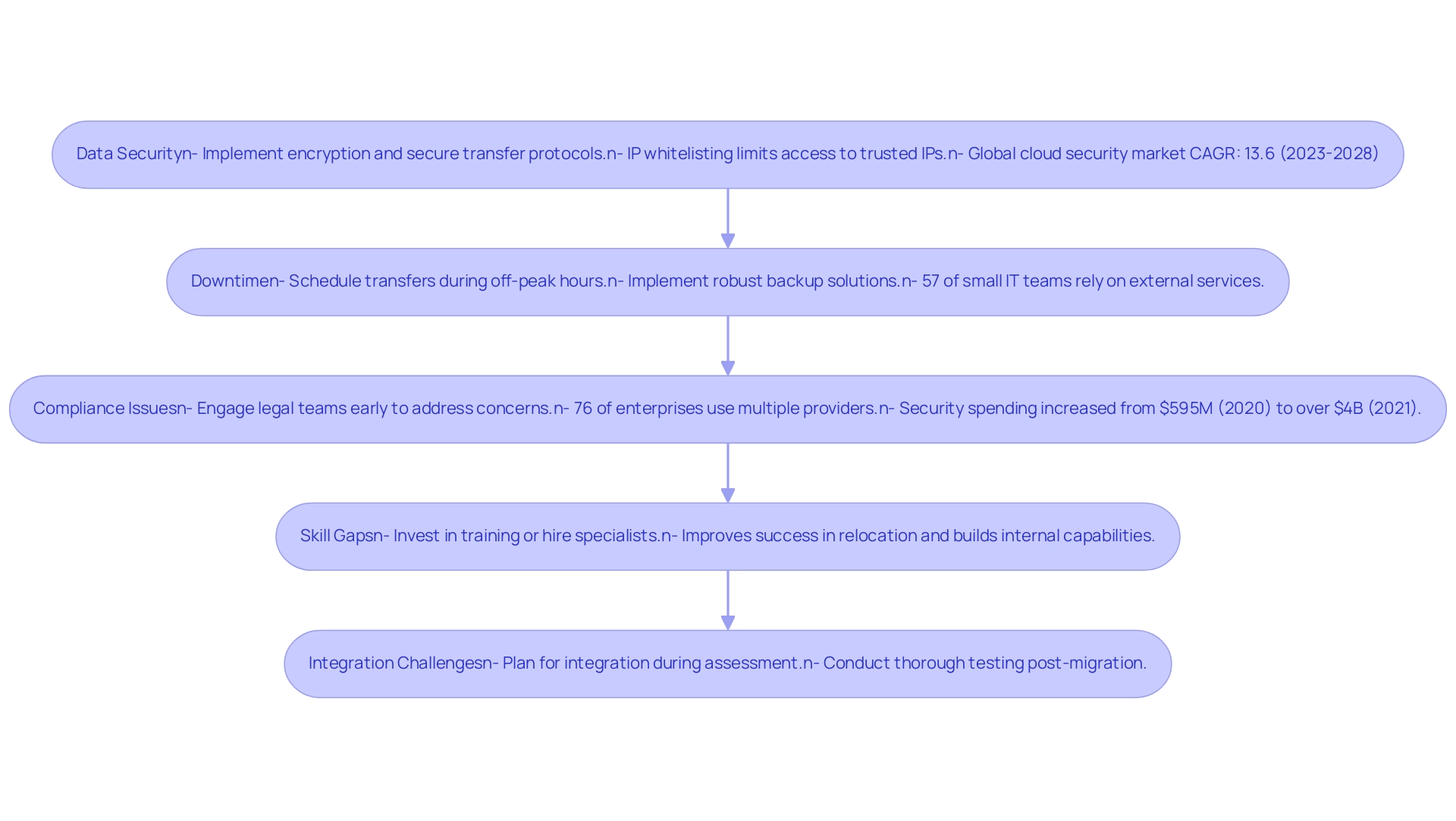
Post-Migration Management: Ensuring Success in the Cloud
Post-migration management is essential for organizations to fully capitalize on their investments and ensure sustained success. Key strategies include:
- Performance Monitoring: Implement continuous performance monitoring to swiftly identify issues and optimize resource allocation.
Utilize advanced management tools that provide insights into usage patterns, allowing for proactive adjustments. As highlighted in recent statistics, effective performance monitoring can significantly mitigate risks associated with online environments, where the average cost of a data breach can reach $3.86 million. According to Deloitte, many organizations are investing in technologies that enhance their performance monitoring capabilities, indicating a trend towards prioritizing this aspect in post-migration strategies.
- Cost Management: Regularly analyze spending on the platform to ensure it remains within budgetary constraints. Implement cost control strategies to avoid unforeseen costs and align services with financial objectives. Notably, IBM Cloud reported a remarkable $25.1 billion in revenue for 2020, reflecting a year-over-year growth of 20%.
This growth highlights the significance of strategic financial management in investments, especially as organizations adjust to new spending trends after migration.
- Protection Audits: Conduct systematic protection audits to uncover vulnerabilities and verify adherence to protection protocols. Regularly enhancing protective measures is crucial for safeguarding sensitive information and applications from new dangers in the online environment.
The case study on future trends in computing highlights the increasing necessity of enhanced security measures as organizations migrate more critical workloads to online services.
-
User Training: Foster a culture of continuous learning by providing users with ongoing training about new features and best practices in the online environment. This helps ensure that all team members are equipped to maximize the capabilities of online technologies effectively.
-
Feedback Loops: Establish robust feedback mechanisms to capture insights from users and stakeholders. This input is invaluable for driving continuous improvement in cloud services and operational processes.
By focusing on these best practices for post-migration management, organizations can not only maximize the benefits of their cloud investments but also secure a competitive edge as they navigate the evolving digital landscape.
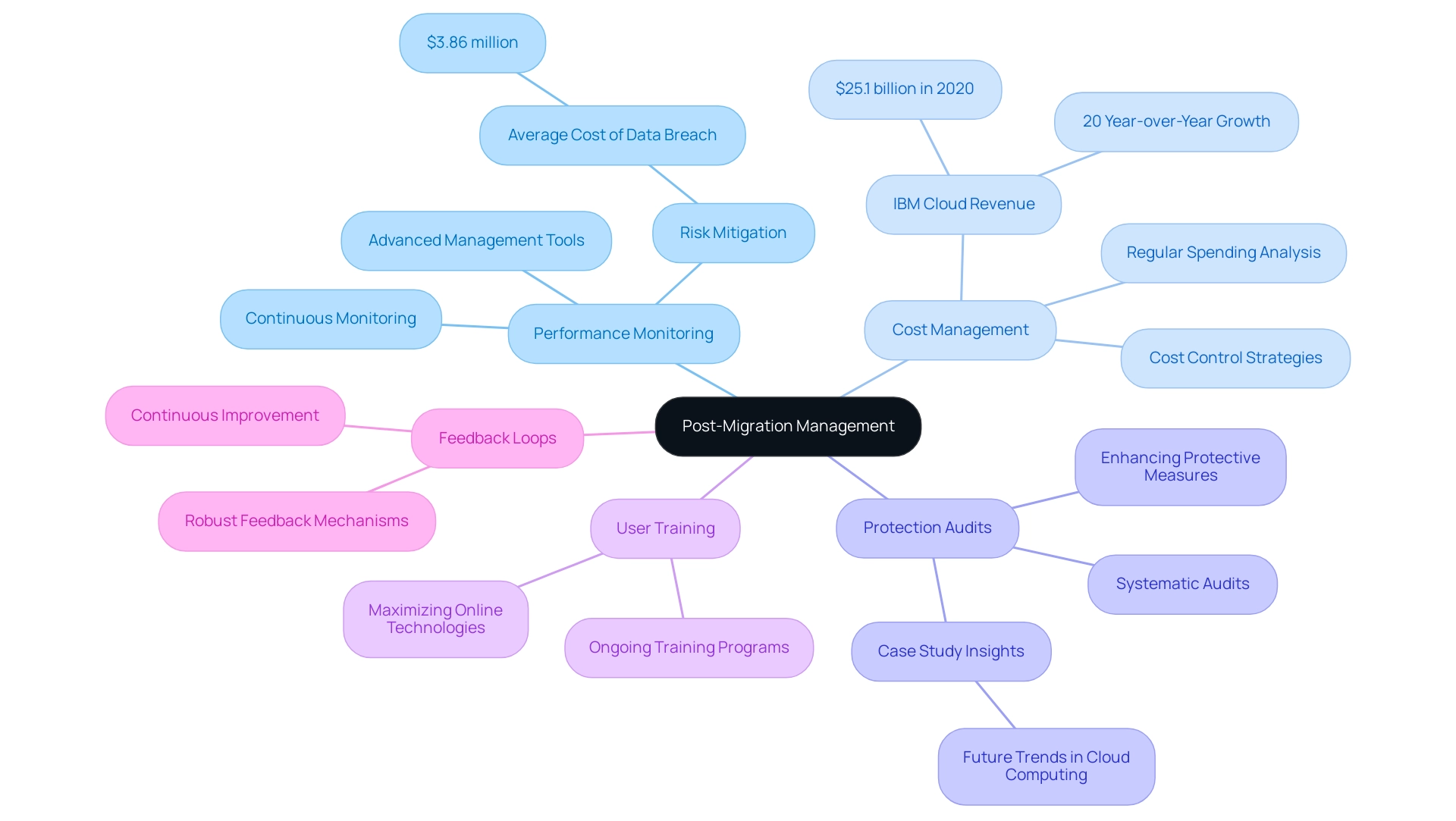
Conclusion
The transition to cloud-based solutions is not merely a technological upgrade; it represents a strategic imperative for organizations aiming to enhance efficiency and resilience. As outlined in the article, understanding the various migration strategies—ranging from rehosting to retiring applications—enables organizations to tailor their approaches according to specific needs and operational goals. Each method presents unique advantages and challenges, emphasizing the necessity of a well-thought-out migration plan.
Moreover, the execution of cloud migration requires a structured approach, beginning with a thorough assessment and culminating in post-migration management. Implementing best practices throughout this process, from selecting the right cloud provider to conducting rigorous testing, significantly mitigates the risks associated with downtime and security vulnerabilities.
Post-migration, organizations must prioritize:
- Performance monitoring
- Cost management
- Ongoing training
to fully capitalize on their cloud investments. By adopting these strategies, businesses can not only enhance their operational capabilities but also foster an environment conducive to innovation and adaptability in an increasingly digital world. In this landscape, organizations that embrace cloud technology effectively position themselves for sustained success and competitive advantage.




